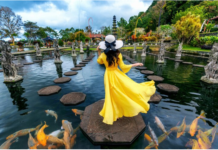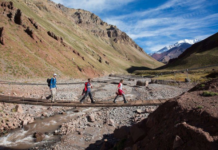Tales from the Amazon: Wildlife Encounters in the Heart of Brazil
The Amazon rainforest, often referred to as the “lungs of the Earth,” is a vast and biodiverse ecosystem that spans across several South American countries, with the largest portion lying within Brazil. It is home to an astonishing array of flora and fauna, making it one of the most biodiverse regions on the planet. Exploring the Amazon offers travelers a chance to witness wildlife in its natural habitat, from elusive big cats and colorful birds to unique aquatic species, while also experiencing the rich cultural heritage of indigenous communities who have lived in harmony with this extraordinary ecosystem for centuries.
Exploring the Rich Biodiversity
The Amazon rainforest covers approximately 2.1 million square miles, accounting for over half of the planet’s remaining tropical rainforests. Within this expanse, diverse habitats support a staggering variety of wildlife adapted to different niches, from the forest floor to the towering canopy above. One of the most iconic residents of the Amazon is the jaguar (Panthera onca), the largest big cat in the Americas and a symbol of strength and agility. Jaguars are skilled hunters, stalking prey such as capybaras, peccaries, and even caimans along the riverbanks and forest trails.
Birdwatching enthusiasts flock to the Amazon to observe over 1,500 bird species, including the vibrant scarlet macaw (Ara macao), the majestic harpy eagle (Harpia harpyja), and the elusive hoatzin (Opisthocomus hoazin), known for its distinctive appearance and unique digestive system. The Amazon’s rivers and oxbow lakes teem with aquatic life, including the Amazon river dolphin (Inia geoffrensis), the largest species of river dolphin that navigates through the murky waters in search of fish and crustaceans.
Encounters with Indigenous Cultures
Beyond its ecological wonders, the Amazon is also home to diverse indigenous cultures that have thrived in harmony with nature for millennia. Travelers can engage in cultural exchanges with communities such as the Yanomami, Kayapo, and Tikuna, learning about their traditional knowledge of medicinal plants, sustainable farming practices, and spiritual beliefs that are deeply rooted in the natural world.
Indigenous guides lead expeditions into the rainforest, sharing their ancestral wisdom and guiding visitors through dense foliage to discover hidden waterfalls, medicinal plants, and ancient petroglyphs that offer glimpses into the Amazon’s rich cultural history. Participating in traditional ceremonies, such as the ritualistic ayahuasca ceremony or the festive dance celebrations, provides travelers with a deeper appreciation for indigenous traditions and their profound connection to the land.
Conservation Challenges and Sustainable Tourism
Despite its ecological significance, the Amazon faces numerous conservation challenges, including deforestation, illegal wildlife trafficking, and climate change. Responsible tourism practices play a crucial role in supporting conservation efforts, protecting biodiversity, and empowering local communities to benefit from sustainable tourism initiatives that promote environmental stewardship and cultural preservation.
Choose eco-friendly lodges and tour operators that prioritize conservation, support local conservation projects, and promote responsible wildlife viewing practices that minimize disturbance to natural habitats and wildlife populations. Participate in guided tours led by certified naturalist guides and indigenous experts who prioritize wildlife conservation, educate visitors about the Amazon’s ecological importance, and advocate for sustainable development practices that benefit both people and the planet.
Conclusion
Exploring the Amazon rainforest offers travelers a transformative journey into the heart of one of Earth’s most biodiverse and culturally rich regions. Whether encountering jaguars on forest trails, birdwatching along riverbanks, or learning from indigenous communities about their deep connection to the land, every experience in the Amazon leaves an indelible mark on visitors who seek to connect with nature, support conservation efforts, and celebrate the cultural diversity of the Amazon’s indigenous peoples.
By embracing responsible tourism practices, travelers can contribute to the preservation of the Amazon’s natural and cultural heritage, ensuring that future generations can continue to marvel at its wildlife wonders, cultural traditions, and ecological marvels for years to come. Journey into the Amazon rainforest and uncover the tales of wildlife encounters, cultural exchanges, and conservation efforts that define this extraordinary ecosystem as a global treasure and a beacon of biodiversity in an increasingly interconnected world.



























